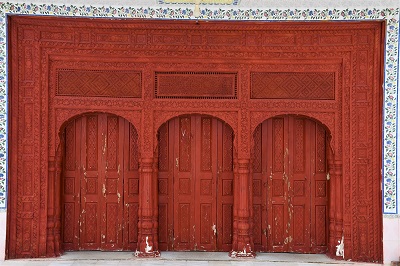
There are eight mosques in Jasial village of which two are historical and are famous for beautiful woodwork.
Zulfiqar Ali Kalhoro
Jasial is a historical village in Talagang tehsil in Chakwal district. It is located about 10 km from Talagang town. Jasial is named after Baba Jasia, the first person who came from the Soan valley in Khushab to settle in the village, as believed by Hamdam Kami, the author of Ahwal-e-Talagang. Along with him another person Baba Jasrang also came to settle in Jasial. However, Tariq Mehmood Malik, historian and author from Talagang, believes that it was founded by Hussain who was from the Jasial caste. Hussain Jasial was also accompanied by Habib who belonged to the Khalan caste. Both came from the Soan valley in Khushab. However, the village became known after Hussain Jasial as Jasial.
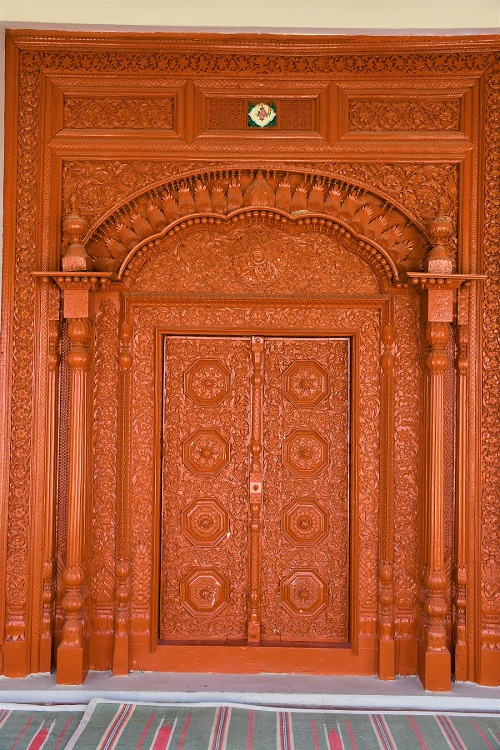
Both the Jasials and Khalans are sub-castes of the Awan tribe. The descendants of both Hussain Jasial and Habib Khalan live in Jasial village, which is famous for its magnificent mosques and mystics. The notable mystics of the Jasial village and neighboring Targar were Shah Behlol whose shrine is located in Targar village, Baba Lalan Faqir and Baba Wadhoo. Both Baba Lalan Faqir and Wadhoo are buried in Talagang town. The shrine of Shah Behlol is located in Targar village. This is probably a sacred space that was marked in honour of Behlol Dana which has become a popular shrine in the area.
There are eight mosques in Jasial village of which two are historical and are famous for beautiful woodwork. The first mosque, which is called Madinah mosque, is the oldest in the village and was first built by Hussain Jasial and Habib Khalan. They also invited a person from the Soan valley to become the Imam of the mosque. The Imam belonged to the Mial sub-caste of the Awan tribe. Apart from Jasial, the Khalan, Mial, Tholah and Hastial sub-castes of the Awans also live in Jasial village.
The Madinah mosque was renovated several times and thus has lost much of its originality, except for the wooden doors.
Hafiz Muhammad Aslam, who I interviewed regarding the history of the Madinah mosque, told me that the mosque once had a beautiful painted wooden ceiling which was removed during renovation. The central door of the mosque, which leads to the main chamber, is the most magnificent. It was made by Mistri Mian Muhammad, who was from Mirjan village, which is famous for two eminent religious scholars Moulana Khan Muhammad Mirjani (d.1909) and his son Moulana Ghulam Mustafa Mirjani (d. 1977).
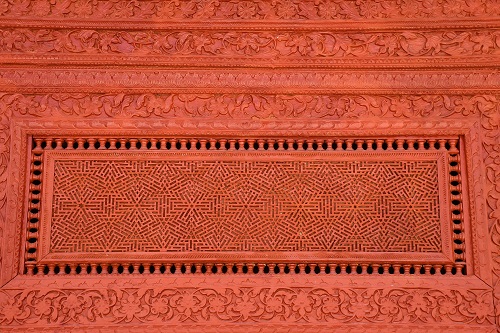
According to Hafiz Muhammad Aslam, Mistri Mian Muhammad was a famous mason and woodcarver of Mirjan village in Talagang tehsil. He was employed to engrave the wooden doors of the Madinah mosque. The central door of the Madinah mosque, which is the most fabulous piece of craftsmanship, was copied from a wooden door of the Jamia mosque of Singwala village. The central door of the Jamia mosque Singwala is also splendidly engraved. This wooden door of Jamia mosque of Singwala is known to almost everyone in Talagang tehsil for its intricate woodcarvings.
Before making the wooden door for Madinah mosque, Mistri Mian Muhammad first went to see the wooden carved door of the Jamia mosque of Singwala village. He made drawings of that door and later, based on those drawings, he tried to imitate the same motifs. Mistri Mian Muhammad made a fabulous wooden door which was no less impressive as compared to the one seen in the Jamia mosque of Singwala. Moreover, Mistri Mian Muhammad records his name and date on the two decorative pillars on the frame of the door. The left decorative post on the door records his name as “Mistri Mian Muhammad of Mirjan” whereas the right post shows the date as 1358 AH / 1939 AD.
A distinctive feature of the door are the decorative posts and floral designs. Such an impressive floral scroll is not seen in any other wooden door in Talagang tehsil. A floral scroll made by Mistri Mian Muhammad on the wooden door of the Madinah mosque of Jasial village even surpassed the wooden door of Jamia mosque of Singwala, which was made by Sirjuddin Mistri of Pachnand in Talagang tehsil. The father of Mistri Mian Muhammad, Mistri Sharafuddin, was also an accomplished mason and woodcarver. Mistri Mian Muhammad had three sons Abdul Rehman, Abdul Qayum, and Abdul Qadeer.
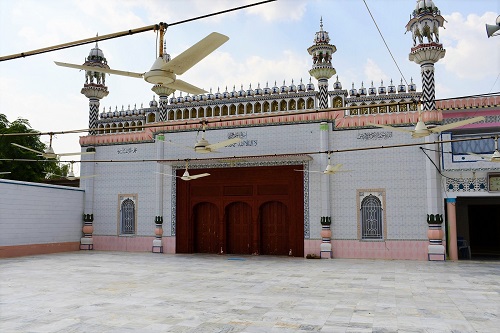 Apart from Madinah mosque, Jasial also hosts another historical mosque which is locally known as Jamia Masjid. This mosque was built by the residents of the village. According to Sarwar Din, an oral historian of the village, the mosque was built about one-and-a-half centuries ago, during the time of his great-grandfather Abdullah Khan. Sarwar Din told me that his father Imam Din (d. 1976) was a close friend of Qazi Ahmed Din, who was a famous mystic and religious scholar of Jasial.
Apart from Madinah mosque, Jasial also hosts another historical mosque which is locally known as Jamia Masjid. This mosque was built by the residents of the village. According to Sarwar Din, an oral historian of the village, the mosque was built about one-and-a-half centuries ago, during the time of his great-grandfather Abdullah Khan. Sarwar Din told me that his father Imam Din (d. 1976) was a close friend of Qazi Ahmed Din, who was a famous mystic and religious scholar of Jasial.
According to Tazkira Aulia-e- Chakwal by Abid Minas (2019), Qazi Ahmed Din was born in 1858 in Jasial village. His father Qazi Muhammad Ahsan was a learned man who was the Imam of Jamia mosque of Jasial village. Qazi Ahmed Din obtained his early education from his father. Later he studied in a mosque in Targar village, and also at Dabhel in modern-day India. Muhammad Usman Ghani Chishti Rizvi Marivi (1986) believes that after taking initiation (bayat) from Khwaja Ahmed Mairvi, he started teaching in the Jamia mosque of Jasial. Qazi Ahmed Din frequently visited Maira Sharif. After the passing away of Khwaja Ahmed Mairvi in 1911, he continued to visit Khwaja Ahmed Khan Mairvi alias Hazrat Thani (d.1931), the first Sajjada Nashin and Khalifa of Khwaja Ahmed Mairvi. Qazi Ahmed Din was associated with the Mairvi branch of the Chishtiyya Nizamiyya Silsila – as one knows from Faizan-e-Mairvi, a book authored by Khwaja Muhammad Fakharuddin Mairvi (2006).
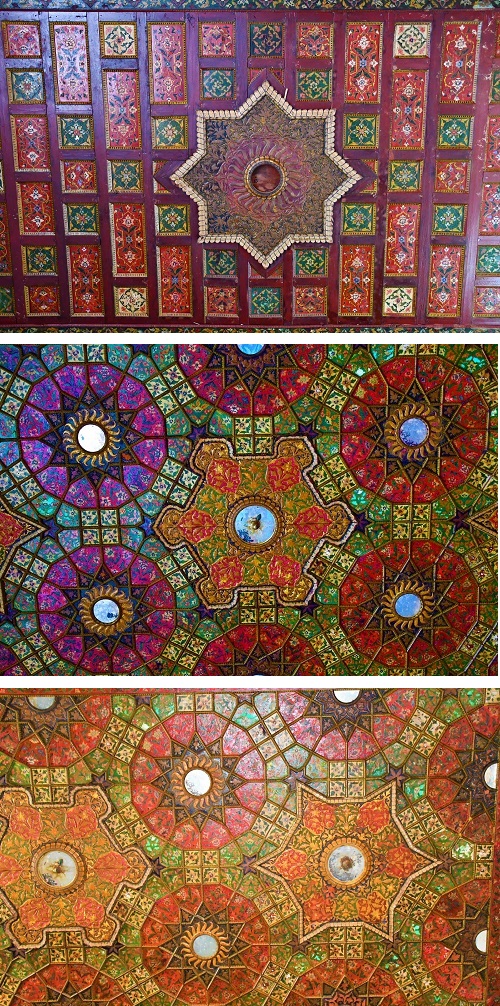
Qazi Ahmed Din continued to teach in the Jamia mosque of Jasial. He was Khateeb, Imam and Mudarris (teacher) in Jamia mosque Jasial. It was he who first started Friday prayers in the village. He also expanded and renovated the mosque. According to Sarwar Din of Jasial, three masons and wood carvers took part in the expansion and renovation of the mosque. An imposing wooden painted ceiling was made by Mistri Ghulam Muhammad of Talagang town. The painted wooden ceiling is one of the most spectacular in terms of ornamentation and variety of motifs. Amongst those engraved motifs, the sun motif is the most prominent which is not seen in any other mosque in Talagang tehsil. One can see a beautiful painted wooden ceiling in the house of Altaf Hussain son of Muhammad Hussain in Jasial village. It has also an imposing wooden door. Both painted wooden ceilings and doors were made by Mistri Noor Muhammad of Jasial village.
Mistri Noor Muhammad of Jasial and Mistri Muhammad Waris of neighboring Targar village also made triple wooden arched entrances and a central wooden door that leads to the main prayer hall of the mosque. Jamia mosque Jasial is probably the only mosque in Talagang tehsil which has such exquisitely engraved wooden arched entrances. I have seen similar skillfully triple wooden-arched entrances in Khajoor Wali mosque in Ranjha village. Ranjha is a historical village in the Dhan area of Chakwal tehsil. I have written an article on the “Mosques and Merchants of Ranjha village”.
Qazi Ahmed Din died in 1973, leaving behind three sons: Qazi Aziz ur Rehman, Qazi Fazal-ur-Rehman and Mehboob-ur-Rehman. After the death of his father, Aziz-ur-Rehman became the khatib whereas Fazal-ur-Rehman became the Imam of the Jamia mosque Jasial. Qazi Aziz-ur-Rehman also conducted renovation and expansion in the mosque.
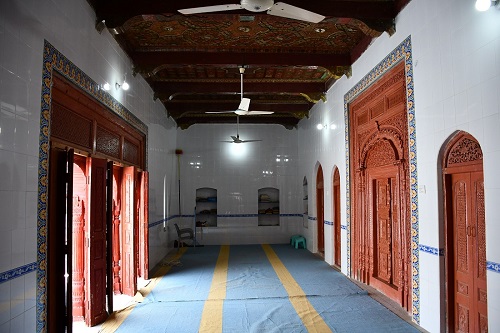
Both brothers were schoolteachers, in addition to all this. Qazi Ahmed Din was fond of reading and he collected a large number of books. He established a library and placed all his collected valuable and rare books and manuscripts in it.
The painted wooden ceiling, doors and arched entrances of the Madinah and Jamia mosques of Jasial village are masterpieces made by the local wood carvers and masons – whose names are either preserved on wooden pieces or in the memories of oral historians and village intellectuals.
It has been good to observe how these oral historians and village intellectuals have preserved the oral history of the cultural heritage of Jasial village for posterity.
_________________________
 Dr. Zulfiqar Ali Kalhoro is an anthropologist and has authored 12 books: ‘Symbols in Stone: The Rock Art of Sindh’, ‘Perspectives on the art and architecture of Sindh’, ‘Memorial Stones: Tharparkar’ and ‘Archaeology, Religion and Art in Sindh’. He may be contacted at: zulfi04@hotmail.com
Dr. Zulfiqar Ali Kalhoro is an anthropologist and has authored 12 books: ‘Symbols in Stone: The Rock Art of Sindh’, ‘Perspectives on the art and architecture of Sindh’, ‘Memorial Stones: Tharparkar’ and ‘Archaeology, Religion and Art in Sindh’. He may be contacted at: zulfi04@hotmail.com
Courtesy: The Friday Times Naya Daur Lahore